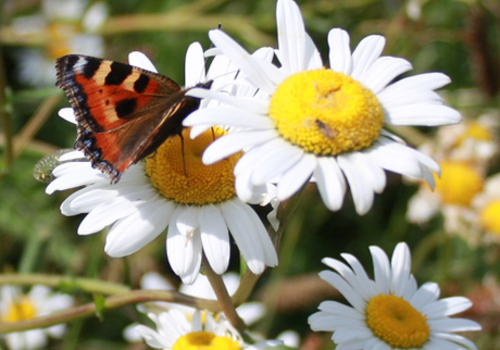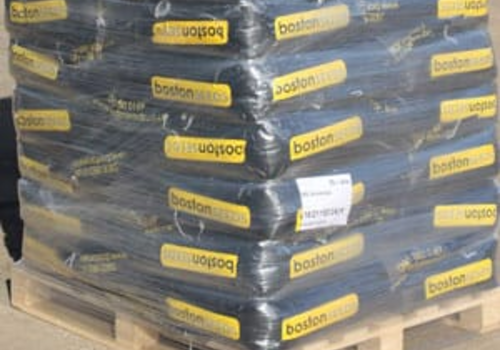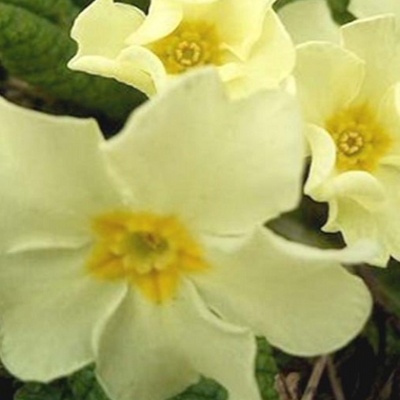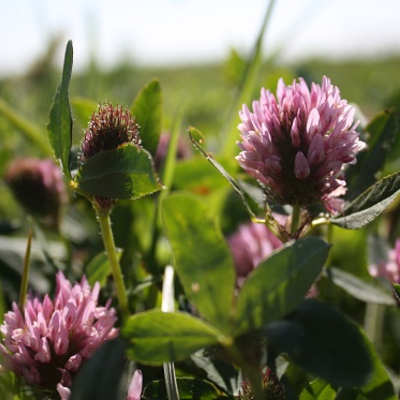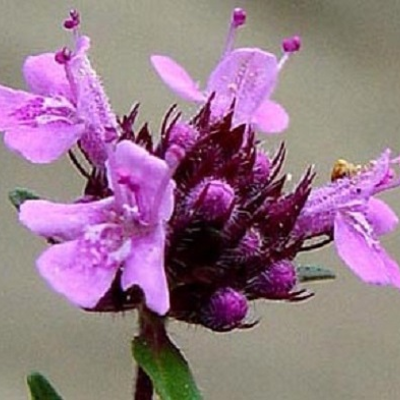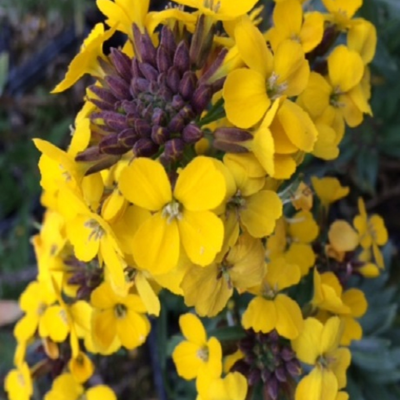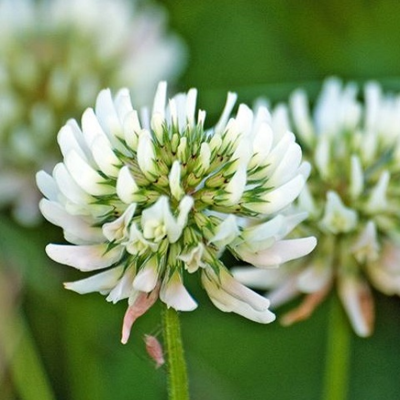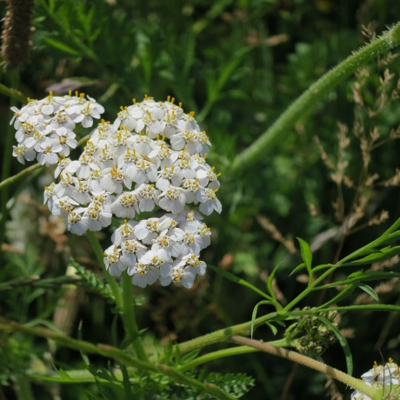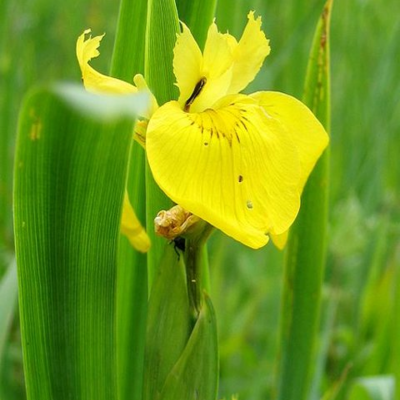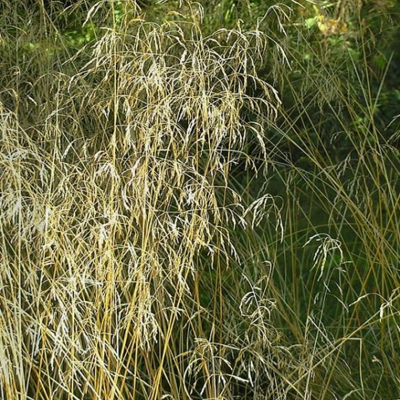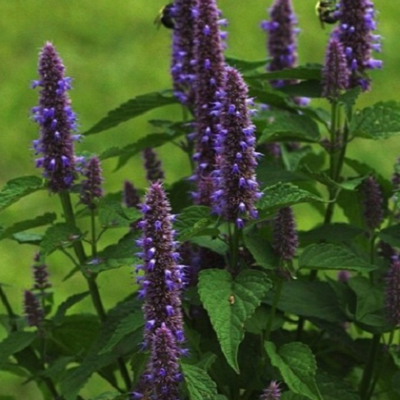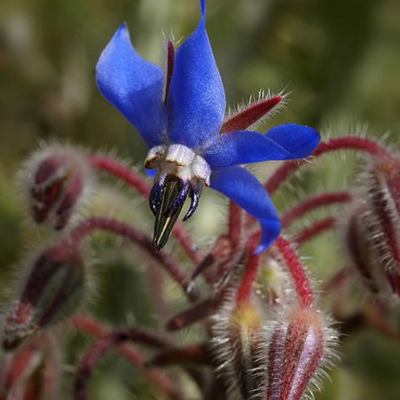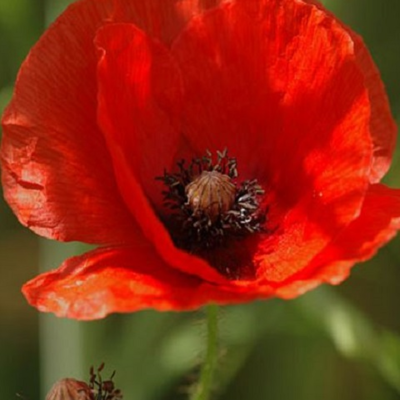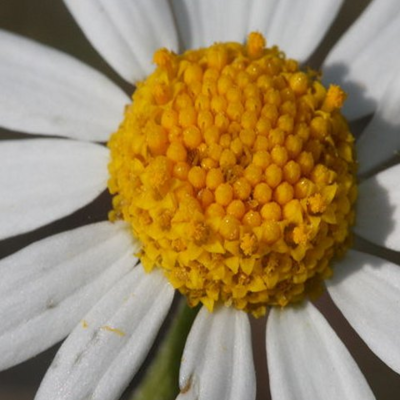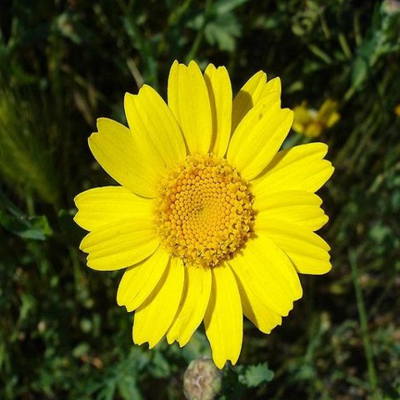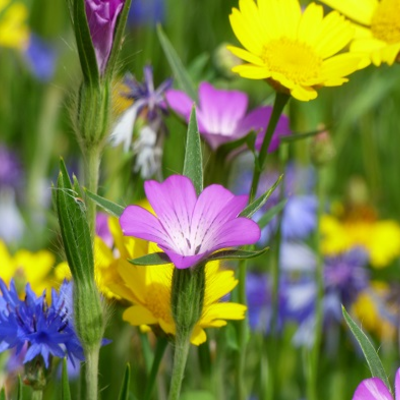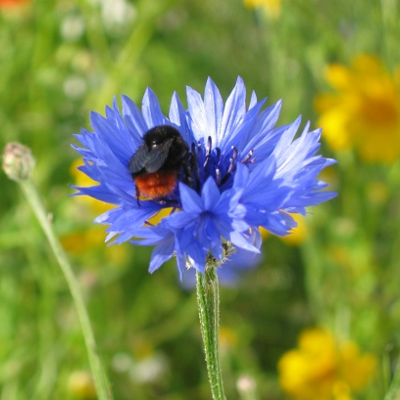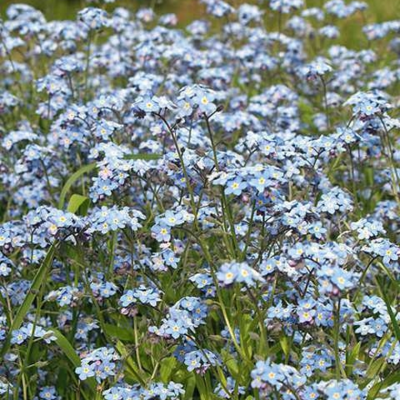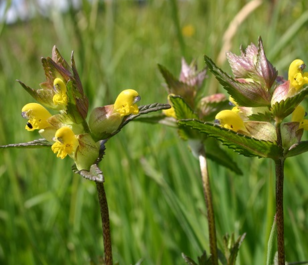Wildflower Plants A to Z
Choose from our entire range of over 100 wildflower plug plants, expertly grown in our very own nursery from high quality, UK native wildflower seed. Our wildflower plugs are ready to be planted straight out into your garden or meadow as soon as they arrive, all year round. Buying individual wildflower plants is one of the best ways to establish your chosen wildflower species, planted individually or as part of a more diverse meadow created from our range of wildflower seeds.
Don't hesitate to get in touch to speak to one of our experts or request a catalogue to view our full range. Ordering regularly or looking for large volumes? Click here to apply for a trade account today - we review all applications within one working day.

Plants for Pollinators highlights plants selected by the RHS as scientifically proven to tackle the declines in bees, butterflies and other pollinators.
The Wild Primrose’s pale yellow, five-petalled flowers are a cottage classic! Its light colouration is a delight under trees and bushes- just imagine a shady spot illuminated by sweet-scented, hardy clusters of buttery beauty!
- Type: Perennial
- Height: 20-30cm.
- Flowers: February-May
- Soil Requirement: Moist but well-drained
- Light Requirement: Full sun or partial shade
- Natural Habitat: Woodland, grassland
- Also known as: Culver Keys, Suncups
Clover plants are an essential and easy-to-grow part of a spring meadow, yet the unique beauty of their spiky, carmine red flower heads and namesake trefoil leaves are often overlooked. Scatter them in a lawn or a flower bed for a vibrant accent to other plants.
- Type: Perennial
- Height: 10-20cm.
- Flowers: May-September
- Soil Requirement: Well-drained
- Light Requirement: Full sun
- Natural Habitat: Grasslands, roadsides
- Also known as: Beebread, Cow Clover
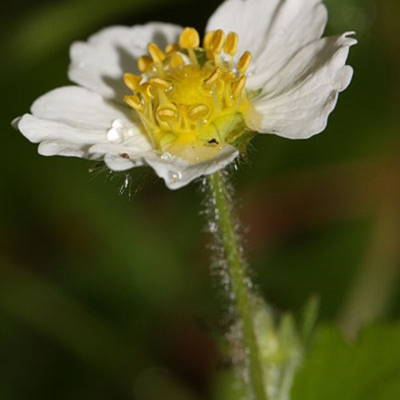

Plants for Pollinators highlights plants selected by the RHS as scientifically proven to tackle the declines in bees, butterflies and other pollinators.
Produces three-leaved rosettes of broad and silky foliage. A brilliant bloom for beginners, as it’s ideal for small pots and baskets, with its daisy-like white flowers with golden centres providing a simple, earthy beauty- and that’s just the appetiser before it bears its beloved, juicy red fruits in the late summer!
- Type: Perennial
- Height: 20-50cm.
- Flowers: April-June
- Soil Requirement: Moist but well-drained
- Light Requirement: Full Sun
- Natural Habitat: Open woodlands, grasslands
- Also known as: Alpine Strawberry

Plants for Pollinators highlights plants selected by the RHS as scientifically proven to tackle the declines in bees, butterflies and other pollinators.
For any of our customers curious about an aromatic and attractive herb that’s as pretty as it is useful and easy-to-grow… read on, it’s about thyme! These low-growing clusters of pale pink and purple petals are well-known for their common culinary use, but they make for a gorgeous ground covering which require very little fuss for the multicoloured majesty they produce. Recommended for rockeries.
- Type: Perennial
- Height: 10-20cm.
- Flowers: June-September
- Soil Requirement: Well-drained
- Light Requirement: Full Sun
- Natural Habitat: Coasts, rocky habitats, moors
- Also known as: Creeping Thyme, Elfin Thyme, Mother Of Thyme
Wallflowers are associated with shyness today, but these brightly-coloured creepers in golden-yellow, amber and brick red make a bold statement in full bloom. These sweetly-scented plants are amazing as ornaments, adding a mysterious sylvan style to a cottage garden as they clamber across rockeries and walls.
- Type: Biennial
- Height: 22-45cm.
- Flowers: March-April
- Soil Requirement: Well-drained
- Light Requirement: Full sun
- Natural Habitat: Waste ground, cliffsides, quarries.
- Also known as: Bleeding Heart, Bloody Warrior, Yellow Gilliflower
A hardy, creeping lawn flower best known for its 3-lobed leaves, but its pom-poms of tinted white petals make for an excellent lawn flower, and carry the faint smell of honey. Easy to grow in any environment.
- Type: Perennial
- Height: 10-20cm.
- Flowers: May-September
- Soil Requirement: Well-drained
- Light Requirement: Full sun
- Natural Habitat: Grasslands, roadsides
- Also known as: Dutch Clover, Ladino Clover
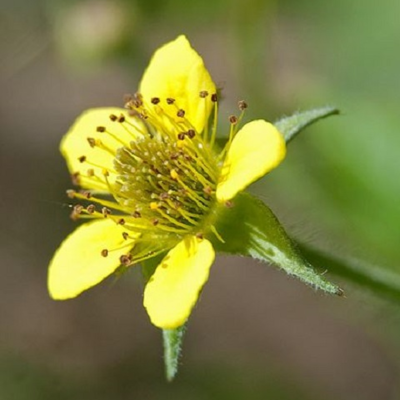

Plants for Pollinators highlights plants selected by the RHS as scientifically proven to tackle the declines in bees, butterflies and other pollinators.
Once named a 'blessed herb' for its uses in herbalism, this hardy, leafy plant can still bless your garden with small, star-shaped, buttery yellow blooms which add some extra brightness to a shady spot- as well as sweetness, as they're nectar-rich and ideal for pollinators.
- Type: Perennial
- Height: 30-60cm.
- Flowers: May-August
- Soil Requirement: Well-drained
- Light Requirement: Partial Shade
- Natural Habitat: Woods, hedgerows, roadsides
- Also known as: Herb Bennett, Colewort, St. Benedict's Herb, Blessed Herb
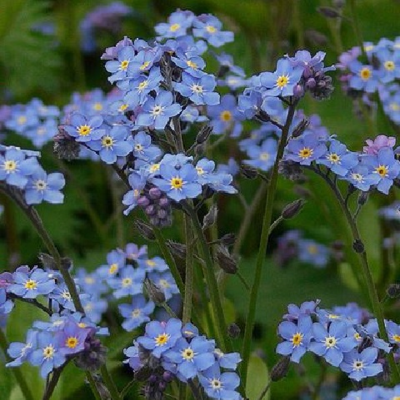

Plants for Pollinators highlights plants selected by the RHS as scientifically proven to tackle the declines in bees, butterflies and other pollinators.
These showy azure blue flowers consist of 5 petals with either a white or an orangery/yellow star shaped centre. An excellent plant for pollinators, for their nectar and pollen.
- Type: Perennial
- Height: 15-30cm.
- Flowers: April-July
- Soil Requirement: Moist, well drained soils
- Light Requirement: Semi shade
- Natural Habitat: Woodland, wet woods, hedgerows
- Also known as: Garden Forget-Me-Not
This item is currently unavailable
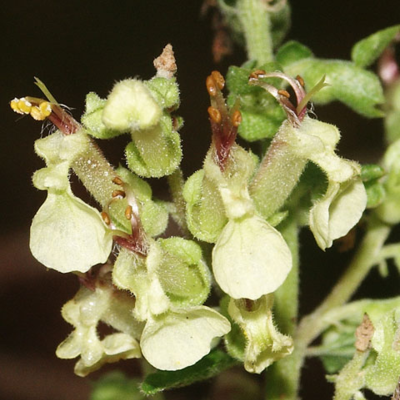

Plants for Pollinators highlights plants selected by the RHS as scientifically proven to tackle the declines in bees, butterflies and other pollinators.
Though the Wood Sage’s crinkly foliage has a more subtle scent than some of its cousins, this sublime specimen has n unusual beauty, bearing dark burgundy stems and stamens contrasted by cream-coloured petals with a large lower lip, making it look like a spoonful of sugar- and it’s sure to add that little extra bit of sweetness to stone gardens and hedgerows.
- Type: Perennial
- Height: 30–50cm.
- Flowers: July-September
- Soil Requirement: Well-drained
- Light Requirement: Partial shade
- Natural Habitat: Woodland, heathland, coasts
- Also known as: Garlic Sage, Hind Heal

Plants for Pollinators highlights plants selected by the RHS as scientifically proven to tackle the declines in bees, butterflies and other pollinators.
An amazing addition to meadows, herb gardens and even lawns! There’s so much to love about this lacy cluster of feathery leaves and florets in white, pink and creamy yellow, we barely know where to start: it's exceptionally hardy, has a powerful aroma, and even outside of the garden, it’s been prized in herbalism for a staggeringly long time- it’s named after its role in Greek legend where the hero Achilles supposedly used it to treat his wounds.
- Type: Perennial
- Height: 40-55cm.
- Flowers: June-October
- Soil Requirement: Well-drained
- Light Requirement: Full sun
- Natural Habitat: Grassland, coastal areas, waste land
- Also known as: Lace Plant, Savory Tea, Thousand-Leaf
The Yellow Flag Iris is thought by some to be the original fleur-de-lis, a symbol of heraldry and royalty. And while the golden, three-petalled flowers and blade-like leaves are regal indeed, its true name is just as appropriate, as this water-resistant plant grows on tall, branching stems which display its beautiful blooms like flags waving in the wind. Recommended as a pond-side plant.
- Type: Perennial
- Height: 100-150cm.
- Flowers: May-August
- Soil Requirement: Moist
- Light Requirement: Full sun or partial shade
- Natural Habitat: Marsh, flood planes, ditches
- Also known as: Flagon, Water Flag, Yellow Fleur-De-Lis
With a large, feather-like seed head, this tall ornamental tussock grass is perfect for attracting bees and other insects. Uniquely grooved, dark green leaves that form stiff rough clumps that form dense tufts that develop into distinctive tussocks.
- Type: Perennial
- Height: 30-120cm
- Flowers: June-August
- Soil requirement: Wet, poorly drained
- Light requirement: Partial sun and shade
- Natural habitat: Marshy fields, rough grassland and woodland
- Also known as: Tussock Grass
This item is currently unavailable
What’s better than the Anise Hyssop’s clumps-forming, soft spikes of mauve flowers? Perhaps only its aromatic leaves! A nectar-rich scented sensation of a herb best placed at the back of a border, where it brings in bees and butterflies.
- Type: Perennial
- Height: 60-100cm.
- Flowers: June-September
- Soil Requirement: Well-drained
- Light Requirement: Full sun or partial shade
- Natural Habitat: Dry forests, praries
- Also known as: Fragrant Giant Hyssop, Lavender Giant Hyssop

Plants for Pollinators highlights plants selected by the RHS as scientifically proven to tackle the declines in bees, butterflies and other pollinators.
Spice up your garden with the quirky colours of the Borage. Its brilliant blue, star-shaped flowers and hairy, scarlet stems are attractive to pollinators and easy to grow with minimal fuss.
- Type: Annual
- Height: 30-60cm.
- Flowers: June-September
- Soil Requirement: Well-drained
- Light Requirement: Full sun or partial shade
- Natural Habitat: Forest verges, meadows
- Also known as: Starflower Cool Tankard, Tailwort
This item is currently unavailable

Plants for Pollinators highlights plants selected by the RHS as scientifically proven to tackle the declines in bees, butterflies and other pollinators.
Scarlet, saucer-shaped, 4-petalled flowers used across the country and beyond as a symbol of remembrance for soldiers lost in the Great War. A hardy annual that self-seeds readily, its vibrant colours are a valuable addition for wild meadows, beds, borders and cottage gardens.
- Type: Annual
- Height: 30-60cm.
- Flowers: May-July
- Soil Requirement: Well-drained
- Light Requirement: Full sun
- Natural Habitat: Grasslands, farmland, roadsides
- Also known as: Blind-Eyes, Flanders Poppy, Headache Plant
This item is currently unavailable

Plants for Pollinators highlights plants selected by the RHS as scientifically proven to tackle the declines in bees, butterflies and other pollinators.
The Corn Chamomile's daisy-like flowers are well-known for their attractive aroma that's been compared to apples, and make them perfect for pollinators. A flower that's easy to care for, with a lot more charm hiding beneath its simple appearance.
- Type: Annual
- Height: 20-30cm.
- Flowers: May-July
- Soil Requirement: Well-drained
- Light Requirement: Full sun
- Natural Habitat: Grasslands
- Also known as: Mayweed, Field Chamomile
This item is currently unavailable

Plants for Pollinators highlights plants selected by the RHS as scientifically proven to tackle the declines in bees, butterflies and other pollinators.
These vibrant yellow flowers make for an ideal choice for beds, borders, or even lawns: its bright colour and subtle, sweet scent helps to attract bees and butterflies.
- Type: Annual
- Height: 15-45cm.
- Flowers: June-October
- Best Sown: Spring
- Soil Requirement: Well-drained
- Light Requirement: Full sun
- Natural Habitat: Hedgerows, meadows
- Also known as: Guild Weed, Yellow Daisy, Yellow Ox-Eye
This item is currently unavailable

Plants for Pollinators highlights plants selected by the RHS as scientifically proven to tackle the declines in bees, butterflies and other pollinators.
Producing magenta and white petals, interspersed with rich indigo veins, these tall, hairy stems of summertime splendour make for a magical meadow flower, especially planted alongside poppies or ox-eye daisies.
- Type: Annual
- Height: 60-120cm.
- Flowers: June-August
- Soil Requirement: Well-drained, sandy
- Light Requirement: Full sun
- Natural Habitat: Grasslands, roadsides
- Also known as: Cat’s Eyes, Kiss-Me-Quick
This item is currently unavailable

Plants for Pollinators highlights plants selected by the RHS as scientifically proven to tackle the declines in bees, butterflies and other pollinators.
These feathery flowers produce pale blue petals tinted with purple - a colour so nice, it's called 'cornflower blue'! Highly attractive to pollinators, and its unique, crisp colouration lends itself to many combinations.
- Type: Annual
- Height: 30-60cm.
- Flowers: June-August
- Soil Requirement: Well-drained
- Light Requirement: Full sun
- Natural Habitat: Grasslands, farmland
- Also known as: Bachelor’s Button
This item is currently unavailable
There is something strangely unforgettable about this flower’s simple-but-unique tiny, baby-blue blooms with rare bursts of pink, and silvery foliage. They’re also perfect for pollinators and have a knack for self-seeding.
- Type: Annual
- Height: 7-25cm.
- Flowers: April-October
- Best Sown: Autumn
- Soil Requirement: Well-drained
- Light Requirement: Full sun
- Natural Habitat: Road-sides, dry grasslands
- Also known as: Blue Mouse-Ear, Scorpion Grass
This item is currently unavailable

Plants for Pollinators highlights plants selected by the RHS as scientifically proven to tackle the declines in bees, butterflies and other pollinators.
Designed specifically to produce yellow rattle plants easily and quickly. Grown from our own quality-assured, fresh, UK native seed, our yellow rattle plugs are ready to be planted in your garden or meadow immediately upon on arrival in April.
Yellow rattle is a surprisingly musical meadow flower and a must for a wildflower garden: as a semi-parasitic plant, it requires robust neighbour plants like grasses and legumes, but also acts as a watchdog against vigorous weeds.. That's on top of the beauty of its golden, bell-shaped flowers, complete with a charming 'chime' as its ripened seed pods rattle in the breeze.
Our yellow rattle plug plants are grown from high-quality, British seed from wild meadow collections, and arrive ready to be planted complete with the essential meadow grasses.
- Type: Annual
- Height: 20–50cm.
- Flowers: May-September
- Soil Requirement: Moist or well-drained
- Light Requirement: Full sun
- Natural Habitat: Grassland, meadows
- Also known as: Corn Rattle, Hay Rattle, Penny Grass
This item is currently unavailable
Choosing different wildflower plants by species gives you complete control over when you plant them, where you plant them and what the end result will be. And buying wildflower plug plants instead of seeds, means that you don't have to wait for them to germinate - perfect if speed is of the essence!
The full range of over 100 British wildflower plants species from Boston Seeds is available to buy online in trays of 25, 150 and 500 plug plants and all are available with nationwide delivery.
Want to learn more about the likes and dislikes of your favourite wildflower plants? Our handy wildflower species quide will tell you all you need to know - yours to download and keep for FREE.
Buy With Confidence

